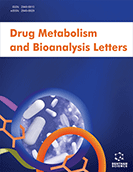Abstract
Objective: Berberine, a plant derived alkaloid, present in Berberis species is well known as one of the most important antioxidants. The current research aimed to study the heamatoprotective characteristics of berberine and clarify its plausible mechanisms against sodium nitrite.
Methods: Forty numbers of male Sprague Dawley rats were categorized into five equal groups, including group 1: control (normal saline); group 2: berberine (100 mg/kg); group 3: sodium nitrite (80 mg/kg); group 4: sodium nitrite (80 mg/kg) plus berberine (50 mg/kg) and group 5: sodium nitrite (80 mg/kg) plus berberine (100 mg/kg) groups. All animals were orally administrated for two months once daily. At the end of the 60th day, blood samples were withdrawn by cardiac puncture and collected in test vials when the animals had been anesthetized with ketamine (70 mg/kg). Then, hemolysate was prepared and the oxidative stress biomarkers, lipid peroxidation, and antioxidant capacity of erythrocytes were evaluated.
Results: Feeding of rats with sodium nitrite remarkably enhanced malondialdehyde (MDA) (p=0.001) levels and considerably reduced the levels of glutathione (GSH) (p=0.001), and also reduced the enzymatic activities of glutathione peroxidase (GPx) (p=0.02), superoxide dismutase (SOD) (p=0.001), glutathione reductase (GR) (p=0.02), and catalase (CAT) (p=0.01). However, the co-administration of these animals with 100 mg/kg of berberine remarkably reverted the values to reach nearly a normal level. While 50 mg/kg berberine failed to restore significantly all of these antioxidant biomarkers at a normal level.
Conclusion: Our results clearly demonstrated that berberine in a dose-dependent manner led to protection against sodium nitrite-induced oxidative injury in rat erythrocytes, which possibly reflects the antioxidant ability of this alkaloid.
Keywords: Berberine, sodium nitrite, oxidative stress, erythrocytes, rat, antioxidant.
[PMID: 23675073]
[http://dx.doi.org/10.4161/oxim.3.1.10476] [PMID: 20716923]
[http://dx.doi.org/10.1016/j.freeradbiomed.2005.07.002] [PMID: 16274876]
[http://dx.doi.org/10.1089/ars.2006.8.1205] [PMID: 16910768]
[http://dx.doi.org/10.1016/j.niox.2012.03.011] [PMID: 22487433]
[http://dx.doi.org/10.1016/j.niox.2009.08.004] [PMID: 19748594]
[http://dx.doi.org/10.1016/j.freeradbiomed.2006.05.019] [PMID: 16895789]
[http://dx.doi.org/10.1161/CIRCULATIONAHA.107.753814] [PMID: 18427145]
[http://dx.doi.org/10.1155/2016/9013816]
[PMID: 8673018]
[http://dx.doi.org/10.1016/S0005-2736(99)00136-4] [PMID: 10518700]
[http://dx.doi.org/10.3109/13880209.2013.796564] [PMID: 23862714]
[http://dx.doi.org/10.3390/ijms18010096] [PMID: 28067795]
[http://dx.doi.org/10.1002/bdrb.20075] [PMID: 16634078]
[http://dx.doi.org/10.1016/j.fitote.2010.08.019] [PMID: 20828602]
[http://dx.doi.org/10.1007/s00204-002-0351-9] [PMID: 12415430]
[http://dx.doi.org/10.5812/jjnpp.68532]
[http://dx.doi.org/10.1111/j.1440-1681.2007.04819.x] [PMID: 17973934]
[http://dx.doi.org/10.1186/1749-8546-5-33] [PMID: 20849653]
[http://dx.doi.org/10.1080/13510002.2016.1140406] [PMID: 26871196]
[http://dx.doi.org/10.1684/ecn.2013.0341] [PMID: 24225033]
[http://dx.doi.org/10.1248/bpb.35.796] [PMID: 22687420]
[http://dx.doi.org/10.1155/2016/9412767]
[http://dx.doi.org/10.1038/nprot.2006.378] [PMID: 17406579]
[http://dx.doi.org/10.1016/0014-4835(83)90085-4] [PMID: 6825728]
[http://dx.doi.org/10.1016/S0021-9258(18)65950-2] [PMID: 13271446]
[http://dx.doi.org/10.1016/j.fct.2011.06.061] [PMID: 21723907]
[http://dx.doi.org/10.1016/S0021-9258(19)45228-9] [PMID: 4623845]
[http://dx.doi.org/10.1021/acs.jafc.5b04898] [PMID: 26586154]
[http://dx.doi.org/10.1016/j.lfs.2014.07.002] [PMID: 25064822]
[http://dx.doi.org/10.1016/j.tiv.2015.07.022] [PMID: 26231821]
[http://dx.doi.org/10.1038/s41573-021-00233-1] [PMID: 34194012]
[http://dx.doi.org/10.1152/physrev.00029.2006] [PMID: 17237348]
[http://dx.doi.org/10.1152/ajpcell.1996.271.5.C1424] [PMID: 8944624]
[http://dx.doi.org/10.1016/0891-5849(89)90144-5] [PMID: 2695407]
[http://dx.doi.org/10.1016/S0278-6915(02)00025-X] [PMID: 12065217]
[http://dx.doi.org/10.1211/jpp.61.07.0001] [PMID: 19589224]
[http://dx.doi.org/10.1016/j.tox.2010.11.005] [PMID: 21095217]
[http://dx.doi.org/10.1016/S0367-326X(99)00098-2] [PMID: 11449466]
[PMID: 28656087]
[http://dx.doi.org/10.1016/j.fct.2010.01.033] [PMID: 20138204]
[http://dx.doi.org/10.1016/S0024-3205(02)02200-2] [PMID: 12467905]
[http://dx.doi.org/10.1016/S0378-8741(01)00387-7] [PMID: 11801387]
[http://dx.doi.org/10.1016/j.etap.2014.11.006] [PMID: 25434762]
[http://dx.doi.org/10.1248/bpb.31.1169] [PMID: 18520050]






























